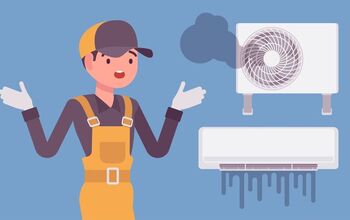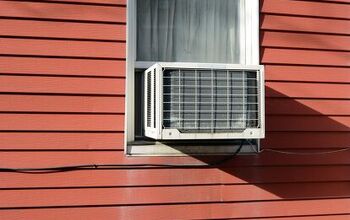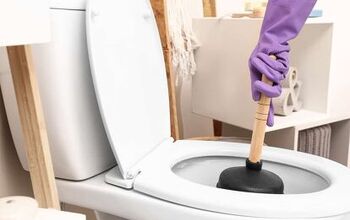Why Are My Air Ducts Dripping Water?

Air ducts are the unsung heroes of our HVAC systems; we don’t typically see them, but they’re always there. That said, air ducts can quickly become disappointing when they don’t work as they should. So, why are my air ducts dripping water?
One of the most common reasons for air ducts to drip water is that they are poorly insulated. Poor insulation and air leaks can cause air ducts to become full of excess condensation that eventually drips. A dirty air filter, clogged drain line, and faulty condensate pump can also explain why your ductwork leaks water.
Act fast if you notice water dripping from your air ducts and call an HVAC company right away. Follow along as we explore why your air ducts are dripping water and highlight solutions.
Why Are My Air Ducts Leaking Water?
1. Faulty Condensate Pump
Condensate pumps remove water from your HVAC system, unless they aren’t working properly. This key component temporarily holds water and then pumps it out when it reaches a certain level. Excess moisture can accumulate within air ducts when the condensate pump fails.
This can cause your air ducts to leak in extreme cases. A faulty condensate pump can also cause corrosion, mold, and mildew within your air ducts. Condensate pumps often fail because of a problem with the float switch, which is often fixable.
However, you must likely replace your condensate pump if it won’t turn on. Luckily, it rarely costs more than $450 to replace a condensate pump. You could spend $250-$300 if you buy the part and materials and install it without professional help.
2. Drain Line Clog
Much like a condensate pump, drain lines help remove water from your HVAC system. Similar to air filters and ducts, drain lines get clogged with dirt, dust, debris, and mold. Once this happens, water can back up and create a mess near the pipes.
Eventually, water can leak into your air ducts and drip from them. Not only is this messy, but it can cause extensive corrosion within your ductwork. Corrosion weakens air ducts over time, puts holes in them and increases the chances of mold.
Luckily, it only costs $75 to fix a clogged drain line, on the low end. Fixing a clogged drain line rarely costs over $250. You can avoid drain line clogs if you routinely flush the line every 30-90 days and clean the drain pan.
3. Poor Insulation
Excessive humidity is one of the biggest reasons why your air ducts may be dripping water. That’s especially true if your air ducts are poorly insulated. Poor insulation that is weak at several points can eventually become soaked with water.
That is especially common in summer when cold air moves through warm air ducts. This causes condensation to build up within your ductwork. The patchier and more damaged the insulation is, the worse this situation can become.
Even well-installed insulation goes bad over time due to wear and tear. It’s worth re-insulating your ductwork or simply patching it as needed. If your duckwork has never been insulated, you must insulate it. It costs $2,000 to insulate air ducts, on average, or between $1,000 and $3,000.
4. Frozen Evaporator Coil
Evaporator coils are essential to an HVAC system’s operation, as they absorb heat. This component can become dirty and clogged, and this often causes it to freeze. Once frozen, an evaporator coil cannot absorb heat from the air.
If the air from your vents doesn’t match the thermostat setting, your evaporator coil may be frozen. Leaking ductwork is another sign that your evaporator coil is frozen. Water leaks as evaporator coils thaw, which can be too much for the condensate line to keep up with.
You can avoid this problem if you routinely clean your condensate line. While you can thaw a frozen evaporator coil with a hair dryer, this doesn’t always work. It’s worth calling an HVAC company if you suspect your evaporator coil is frozen as they may need to replace the part altogether.
5. Air Leaks
Air ducts are prone to wear and tear just like any other part of an HVAC system. This occurs when air seeps through gaps and cracks in your ductwork. Air leaks are wasteful as air that you paid to heat or cool leaks out before it can reach the vents.
Gaps and cracks in an air duct form over time due to several reasons, such as gravity and movement. For example, an air duct can eventually sag, causing it to leak conditioned air. Cracks can also form when air ducts move around a lot because of air pressure, especially if they aren’t secured.
You can tell you have an air leak if your air ducts are dripping water and produce dusty air. Exorbitant energy bills are also common in homes with air duct leaks. It costs between $150 and $650 to fix ductwork air leaks, depending on the severity of the problem.
6. Dirty Filter
Dirty air filters cause many common HVAC problems, including air ducts that leak water. That’s because dirty filters cause pressure to build up within air ducts and HVAC systems overall. This can even cause your AC to freeze up, and the surfaces in your home will likely become dusty.
Many air filters are designed to be replaced every 30 to 90 days. Failure to replace an air filter soon enough can strain your HVAC system and damage your AC evaporator coil. Stay stocked up on air filters and replace your filter every 1-3 months to avoid this problem.
However, you must call an HVAC company if it’s too late and your air ducts are already leaking water. They may need to clean and or replace your AC evaporator coil. Keeping up with air duct cleanings and filter replacements can prevent this problem.
7. Your Ductwork Was Installed Incorrectly
Some homeowners understandably choose the cheapest options when installing air ducts. This may save money at the time, but it can lead to problems later on. For example, a poorly installed air duct is prone to dripping water and even sagging.
That’s especially true if you forego professional help or hire inexperienced contractors to install your air duct. Gaps, cracks, and tilted sections in ductwork can cause water to accumulate and eventually drip. Some people don’t properly secure ductwork, which makes it more susceptible to gravity and movement.
Excessive movement makes an air duct noisier and more prone to damage and leaks. When in doubt, hire an experienced HVAC company with positive online reviews. Licensed HVAC contractors with years of experience are more likely to install your ductwork without any defects, like a crooked drip pan.
8. Drip Pan Damage
Are your air ducts leaking water from the bottom? If so, this may be a sign that your drip pan is cracked and damaged. Drip pans collect water so that it won’t spread throughout an HVAC system.
However, this isn’t quite possible if a drip pan is cracked, crooked, or has holes in it. Drip pan problems can occur over time due to water damage and poor installation. For example, a drip pan must be level for it to adequately collect water.
If it’s crooked, water can easily roll out of the drip pan and leak from your air ducts. You can expect to spend $400 to replace an AC drip pan, on average, or between $200 and $600. It’s worth hiring an HVAC technician to replace your drip pan, as it can be difficult if you don’t have experience.
Summing It Up
Check your filter to see if it’s clogged and replace it as needed if your air ducts are dripping water. You may also need to unclog your drain line and thaw or replace your evaporator coil. Air duct water leaks can also occur because of air leaks, poor insulation, a faulty condensate pump, and a crooked drip pan.
Related Guides:

Nick Durante is a professional writer with a primary focus on home improvement. When he is not writing about home improvement or taking on projects around the house, he likes to read and create art. He is always looking towards the newest trends in home improvement.
More by Nick Durante



























